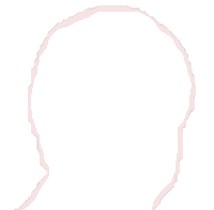Laurel McDonald

The MacEachern - Ponsford Memorial Award - 1991
The David Barlow Memorial Award - 1991
B. Sc. Honours Thesis
Structure of the Dunamagon Granite, Baie Verte Peninsula, Newfoundland
(PDF - 21.2 Mb)
New Structural data from field observations and microstructural analysis are the basis of description of structures in the Dunamagon Granite, for the purpose of determining whether it has an intrusive, or tectonic, contact with adjacent rocks of the Humber and Dunnage Zones, and if the contact is tectonic, what type of structure it represents. Major tectonic structures in the Dunamagon Granite include an east-west striking foliation, oblique southeast-trending down-dip lineation, and east-west striking shear zones. The Dunamagon Granite intrudes the Pacquet Harbour Group to the south and is in tectonic contact with the Ming's Bight Group to the north. The northern boundary, along which the Dunamagon Granite and Pacquet Harbour Group were thrust, is interpreted as either a tectonically activated intrusive contact or as a purely tectonic contact between the Dunamagon Granite and the Ming's Bight Group. Depending on the interpretation, the Silurian age of the granite provides a maximum, or minimum, age of juxtaposition of the groups. Microstructural analysis revealed two generations (high and low temperature) of quartz microstructures in the Dunamagon Granite, probably formed by dislocation creep and grain boundary migration recrystallization during two deformation events. Mafic rocks in contact with the Dunamagon Granite preserve mineral assemblages representative of high (epidote-hornblende-biotite-quartz-plagioclase) and very low (prehnite) temperature metamorphism, suggesting two metamorphic events. The results of this study justify re-evaluation of the contact relations of the Dunamagon Granite and the timing of the juxtaposition of the Humber and Dunnage Zones in this area.
Keywords: Dunamagon Granite, Baie Verte Line, Ming's Bight Group, thrusting,
microstructural analysis, deformation mechanisms
Pages: 103
Supervisor: Rebecca A. Jamieson



